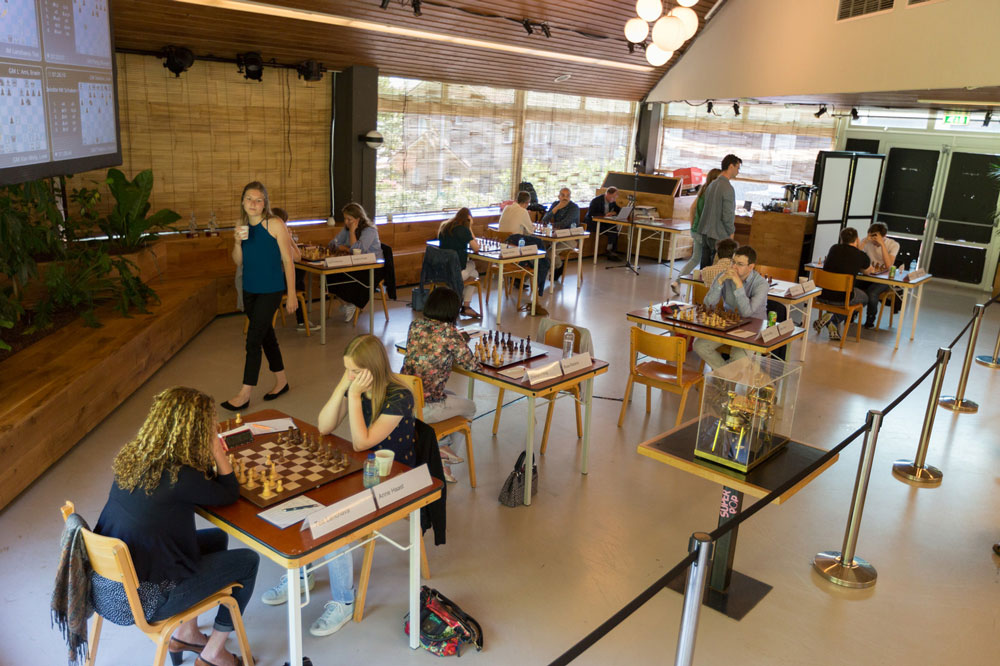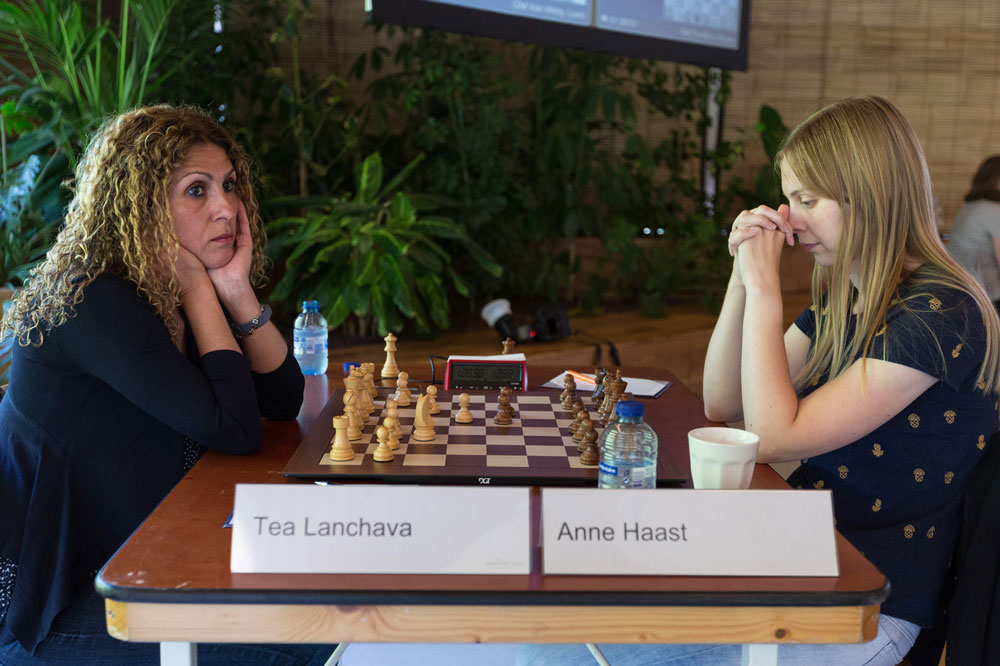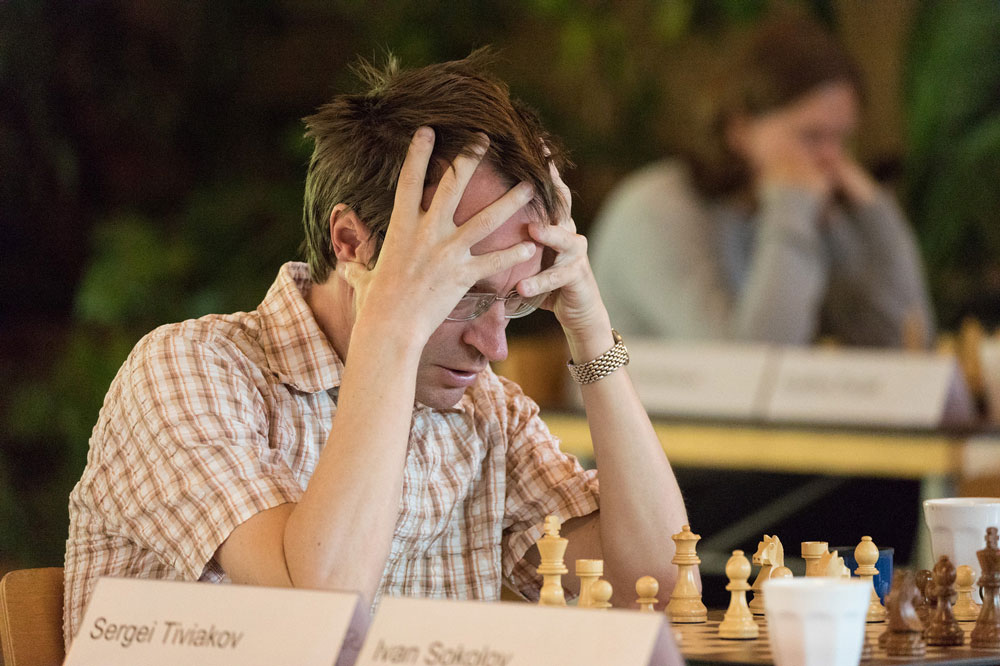Spanish positional sacrifice
After four rounds at the Dutch Championship in Amsterdam, Sergey Tiviakov is in the lead. The Groningen-based grandmaster has scored wins against IM Koen Leenharts and GMs Ivan Sokolov and Sipke Ernst.
Round five results
With the white pieces against Sokolov, Tiviakov reached a noteworthy position in the Spanish game.
The pinned rook on e7 and the hole on f6 are annoying. White threatens 23.Bxd5 cxd5 24.Nf6+ Kg7 25.Qf4 with the idea 26.Qd4 or 26.Nh5. Black is fine after 22...Qc7. But he played instead 22...f5? and had to give up after 23.Nf6+ Kh8 24.Nxd5 cxd5 25.Bf6. The d5-square is collapsing.
The positional exchange sacrifice is one of the most powerful and fascinating strategic weapons in chess. On this DVD Sergey Tiviakov explains why the positional exchange sacrifice is such a strong weapon and how to use it.
In the same round Loek Van Wely and Erwin l'Ami drew, as did Sipke Ernst and Jorden van Foreest. Erik van den Doel defeated Leenhouts.
In the following round, l'Ami drew with Sokolov but van den Doel got his second win in a row to move into sole second place behind Tiviakov.
Van den Doel was goaded into sacrificing a knight for two paws, but the game was balanced until van Foreest gave his opponent a chance to swap a rook for two knights.
18.Rg1 was actually a mistake due to 18...Rxd2! The point is 19.Nxd2 is not possible on account of 19...Qh4+, therefore 19.Qxd2 Qxf3 =
Had van Foreest played 18.Rh1, then Rxd2 fails as 19.Nxd2 Qh4+ is nothing for black who simply plays 20.Kg2 and the rook attacks the queen.
After 20.Qd7 Bf8 21.Qd5 Qf6 van Foreest tried to activate his rooks by gambiting a pawn 22.Bg5:
Van Foreest overestimated his attacking chances in inviting 22...Qxf2+ 23.Rg2 Qa7! 24.Rf1 when black's king is safe and he's up material.
On the last move of the time control, van den Doel missed a chance to put the game away:
39...Bd5! would hold the f7 point while threatening the devastating Qh1+ invasion, to which there's no defence. But Black played 39...Ba8 and suddenly 40.Qf4 stops Qh1 ideas, e.g. 41...Qh1+ 42.Kf2 Qh2+ 43.Ke1 and f7 is hanging (in contrast to the same position with the bishop on d5).
Black is still much better however and after making time control with 40...Qd5 he reeled in the full point 23 moves later.

The playing hall for both Open and Women sections | Photo: Harry Gielen
Standings after Round 5
All games
Women's Championship
In the women's tournament Tea Lanchava led after four rounds with 3½ points, her only draw coming against Anne Haast, who was tied for second with Peng Zhaoqin on 3.0.

Tea Lanchava and Anne Haast
Peng is a multiple-time Dutch champion and both she and Haast had won two and drawn two thus far.
In round five, Peng defeated Lanchava to take over the lead. Haast also won and both players have 4.0 / 5.
Standings after Round 5
All games
Translation from German and additional reporting: Macauley Peterson
Links

























